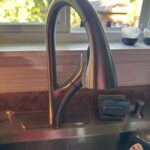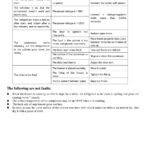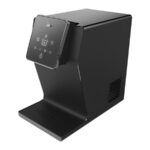Streaks on your floor after mopping are usually caused by using too much soap or dirty water. Inadequate rinsing can also leave residue.
Mopping floors is essential for maintaining cleanliness and hygiene. Yet, streaks can undermine your efforts, making the floor look unsightly. The type of cleaner, water quality, and mopping technique all play crucial roles. Excess soap leaves a sticky residue that streaks upon drying.
Dirty water reintroduces grime, causing streaks. Using clean water and proper amounts of soap helps. Rinsing the mop frequently can make a significant difference. By understanding these factors, you can achieve streak-free, sparkling floors. Proper mopping ensures your floor remains spotless and visually appealing.
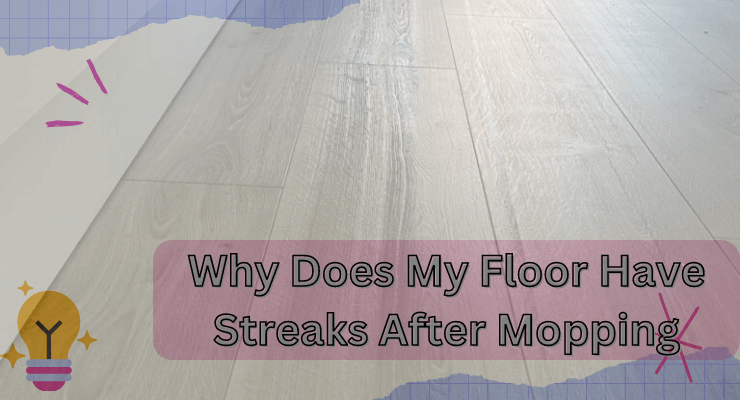
Common Causes Of Streaks
Does your floor have streaks after mopping? This problem is common and frustrating. Streaks can make a clean floor look dirty. Understanding the causes can help prevent them.
Dirty Mop
A dirty mop is one of the main reasons for streaks. When a mop is not clean, it spreads dirt around. This dirt then leaves streaks on your floor.
To avoid this, rinse the mop often while cleaning. Change the water if it becomes too dirty. This will help keep your mop clean and streaks away.
Incorrect Cleaning Solution
Using the wrong cleaning solution can also cause streaks. Some solutions leave a residue that shows up as streaks. Make sure to use a solution that is safe for your floor type.
Check the instructions on the cleaning product. Some floors need special cleaners. Using the right one will help keep your floor streak-free.
| Floor Type | Recommended Cleaner |
|---|---|
| Wood | pH-neutral cleaner |
| Tile | Non-acidic cleaner |
| Laminate | Water-based cleaner |
- Always read labels before using a cleaner.
- Test a small area first.
- Follow the recommended mixture ratios.
By using a clean mop and the right cleaning solution, you can avoid streaks. Your floor will look clean and shiny every time you mop.
Choosing The Right Mop
Many people wonder, “Why does my floor have streaks after mopping?” The answer often lies in the mop you use. Choosing the right mop can make a huge difference. Different mops serve different purposes. Let’s dive into the types of mops and their pros and cons.
Types Of Mops
There are various types of mops available. Each type serves a specific need. Below is a table to help you understand the types of mops better.
| Type of Mop | Description |
|---|---|
| String Mop | Traditional mop with strings. Good for heavy-duty cleaning. |
| Sponge Mop | Comes with a sponge head. Ideal for absorbing liquids. |
| Microfiber Mop | Made of microfiber cloth. Perfect for picking up dust. |
| Steam Mop | Uses steam to clean. Great for sanitizing floors. |
Pros And Cons
Choosing the right mop involves understanding the pros and cons of each type. Below is a list to guide you:
-
String Mop:
- Pros: Effective for heavy dirt, durable, and covers large areas.
- Cons: Takes time to dry, can leave streaks if not rinsed properly.
-
Sponge Mop:
- Pros: Absorbs spills well, easy to wring out, and simple to use.
- Cons: Can harbor bacteria if not cleaned, may leave residue.
-
Microfiber Mop:
- Pros: Great for picking up dust, reusable, and eco-friendly.
- Cons: Not ideal for heavy-duty cleaning, needs frequent washing.
-
Steam Mop:
- Pros: Sanitizes floors, quick drying, and chemical-free.
- Cons: Expensive, needs electricity, and can damage delicate floors.
Optimal Cleaning Solutions
Have you ever wondered why your floor has streaks after mopping? The answer often lies in the cleaning solutions you use. Using the right products can make a world of difference. In this section, we’ll explore optimal cleaning solutions to keep your floors streak-free and sparkling clean.
Homemade Solutions
Homemade solutions are cost-effective and easy to make. They often use ingredients you already have at home.
- Vinegar and Water: Mix one cup of vinegar with one gallon of water. This solution works well on most floors.
- Baking Soda Paste: Mix baking soda with a bit of water to form a paste. This can help remove tough stains and grime.
- Lemon Juice: Add lemon juice to your mopping water. It leaves a fresh scent and helps cut through grease.
Commercial Products
Commercial products are designed to tackle specific cleaning challenges. They often provide superior results.
| Product | Best For | Usage Tips |
|---|---|---|
| Multi-Surface Cleaners | All floor types | Follow the instructions on the label for best results. |
| Tile Cleaners | Tile and grout | Use a brush for grout lines. |
| Wood Floor Cleaners | Hardwood floors | Use a soft mop to avoid scratches. |
Both homemade and commercial solutions have their merits. Choose the one that suits your needs and floor type. With the right cleaning solution, your floors will be streak-free and shiny.
Credit: www.reddit.com
Proper Mopping Techniques
Mopping your floor can be challenging. Many people see streaks after mopping. This happens due to improper techniques. Learning proper mopping techniques can help. Follow these steps for a streak-free floor.
Mop Preparation
Start by preparing your mop correctly. Use a clean mop. If the mop is dirty, it will leave streaks. Fill a bucket with warm water. Add a small amount of floor cleaner. Too much cleaner can cause streaks.
Wring out the mop properly. It should be damp, not wet. Excess water can leave streaks. Use a mop with a microfiber head for best results.
| Step | Details |
|---|---|
| 1 | Use a clean mop |
| 2 | Fill bucket with warm water and cleaner |
| 3 | Wring out mop to be damp |
| 4 | Use microfiber mop head |
Mopping Pattern
Follow a consistent mopping pattern. Start in one corner of the room. Mop in straight lines. Overlap each pass slightly to avoid missed spots.
Do not mop in circles. Circular motions can leave streaks. Work your way towards the exit. This avoids stepping on the clean floor. Change the water if it gets dirty. Dirty water spreads dirt and leaves streaks.
Key steps for mopping pattern:
- Start in one corner
- Mop in straight lines
- Overlap each pass
- Avoid circular motions
- Change dirty water
Drying Methods
Understanding the right drying methods after mopping can prevent streaks on your floor. Effective drying ensures a streak-free, shiny surface. Let’s explore two common drying methods: air drying and using fans.
Air Drying
Air drying is the simplest method. Leave the floor to dry naturally. This method works best in rooms with good ventilation.
- Open windows to allow fresh air to circulate.
- Ensure no foot traffic until the floor is completely dry.
- Use a dry, clean mop to remove excess water before air drying.
Air drying is energy-efficient and cost-effective. However, it might take longer in humid conditions.
Using Fans
Using fans can speed up the drying process. This is especially useful in larger rooms or during humid weather.
| Fan Type | Effectiveness |
|---|---|
| Ceiling Fans | Good for evenly spreading air across the room. |
| Standing Fans | Effective for targeted drying in specific areas. |
| Box Fans | Ideal for placing near wet spots for quick drying. |
Place fans in strategic positions to cover the entire floor. Ensure fans are set to medium or high speed for optimal drying.
Using fans prevents water from lingering, reducing streaks and ensuring a shiny floor.
Maintenance Tips
Streaks on floors after mopping can be frustrating. Proper maintenance helps keep floors shiny and clean. Here are some effective tips to maintain your floors.
Regular Mop Cleaning
Cleaning your mop regularly is crucial. A dirty mop leaves streaks. Follow these steps for a clean mop:
- Rinse the mop with hot water after each use.
- Use a mild detergent to clean the mop head.
- Let the mop dry completely before storing.
Floor Care Routine
Establishing a floor care routine is essential. Here are some tips:
- Dust or sweep daily: This removes loose dirt and debris.
- Use the right mop: Choose a mop suitable for your floor type.
- Use clean water: Change the water frequently when mopping.
| Tip | Description |
|---|---|
| Regular Mop Cleaning | Prevents streaks and keeps mop effective. |
| Dust or Sweep Daily | Removes loose dirt and debris. |
| Use Clean Water | Prevents spreading dirt around. |
Preventing Future Streaks
Streaks on your floor after mopping can be frustrating. To keep your floors streak-free, follow these simple tips.
Consistent Cleaning Schedule
Maintaining a consistent cleaning schedule is key. Clean your floors regularly to prevent dirt build-up. Use a microfiber mop as it picks up more dirt and dust. A good rule of thumb is to mop high-traffic areas twice a week.
Here’s a simple cleaning schedule:
| Area | Frequency |
|---|---|
| Living Room | Twice a week |
| Kitchen | Three times a week |
| Bedrooms | Once a week |
High-traffic Area Tips
High-traffic areas need special attention. Use mats at entrances to reduce dirt. Clean these areas more frequently to avoid streaks. Always use a clean mop head to avoid spreading dirt.
- Place mats at doorways
- Clean these areas twice a week
- Use a clean mop head each time
By following these tips, you can keep your floors streak-free and sparkling clean.
Best Practices For Different Floor Types
Struggling with streaks on your floor after mopping? You might be using the wrong cleaning methods for your floor type. Learn the best practices for different floor types to ensure a streak-free shine every time.
Wood Floors
Wood floors need special care to avoid streaks. Use a damp mop rather than a wet one. Excess water can damage wood. Choose a cleaner designed for wood floors. Avoid general-purpose cleaners. They can leave streaks and residue. Wipe up spills immediately to prevent damage. Always mop in the direction of the wood grain. This helps maintain the natural look.
Tile And Stone
Tile and stone floors have different needs. Use a pH-neutral cleaner. Acidic or alkaline cleaners can damage the surface. Sweep or vacuum the floor first. This removes loose dirt that can cause streaks. Mop with a microfiber mop. It picks up more dirt and leaves fewer streaks.
For deep cleaning, use a steam mop. Ensure it is safe for your type of tile or stone. Dry the floor with a clean, dry mop. This prevents water spots and streaks.
| Floor Type | Best Cleaner | Drying Method |
|---|---|---|
| Wood | Wood floor cleaner | Dry with a soft cloth |
| Tile and Stone | pH-neutral cleaner | Dry with a clean mop |
Frequently Asked Questions
How Do You Get Rid Of Streaks After Mopping?
Use a clean, damp mop with minimal water. Dry the floor with a microfiber cloth. Avoid harsh cleaners.
Why Do My Floors Have Residue After Mopping?
Residue after mopping can be caused by using too much cleaner, not rinsing the mop, or dirty water.
Why Does My Floor Have Marks After Mopping?
Your floor may have marks after mopping due to dirty water, wrong cleaner, or a dirty mop. Use clean water, appropriate cleaner, and a clean mop.
Why Is There A Film On My Floor After Mopping?
A film on your floor after mopping often results from using too much soap. Rinse the mop thoroughly and use less detergent.
Why Are My Floors Streaky After Mopping?
Residue from cleaning products often causes streaks. Use less detergent and rinse with clean water.
Conclusion
Achieving a streak-free floor after mopping requires proper techniques and the right cleaning products. Ensure your mop is clean and not overly wet. Avoid harsh chemicals and opt for gentle, floor-specific solutions. Regular maintenance and careful cleaning can keep your floors looking pristine and streak-free, enhancing your home’s overall appearance.

